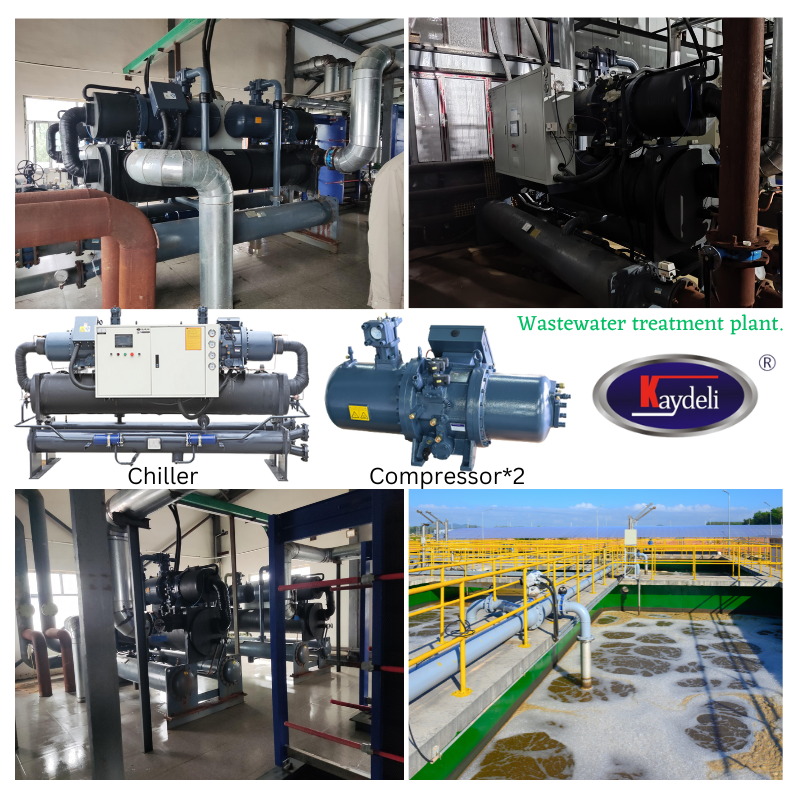
How Wastewater Treatment Chillers Work in a plant
Wastewater treatment is a vital process that ensures that water is safe to be released back into the environment. One important aspect of wastewater treatment is the use of chillers to cool the water before it is treated. In this article, we’ll take a closer look at how wastewater treatment chillers work and why they’re important in the process.
How Wastewater Treatment Chillers Work
Wastewater treatment chillers work by cooling the water that is being treated. The chiller removes heat from the water, which helps to slow down the growth of bacteria and other microorganisms in the water. This makes it easier to treat the water and remove any contaminants.
Kaydeli’s water-cooled chiller is an example of a chiller that can be used in wastewater treatment. This chiller uses a refrigeration cycle to remove heat from the water. The refrigeration cycle works by compressing a refrigerant gas, which causes it to become hot. The hot gas then flows through a condenser, where it releases heat and becomes a liquid. The liquid refrigerant then flows through an expansion valve, which causes it to become cold and turn back into a gas. The cold gas then flows through an evaporator, where it absorbs heat from the water and turns back into a liquid. This cycle repeats, continuously removing heat from the water.
Why Wastewater Treatment Chillers are Important
Wastewater treatment chillers are important because they help to ensure that the water being treated is at the right temperature for effective treatment. If the water is too warm, bacteria and other microorganisms can grow too quickly, making it more difficult to treat the water effectively. By cooling the water, wastewater treatment chillers make it easier to remove contaminants and ensure that the water is safe to be released back into the environment.
In addition to improving the effectiveness of wastewater treatment, chillers can also help to reduce energy costs. By cooling the water before it is treated, less energy is needed to treat the water effectively. Kaydeli’s water-cooled chiller is designed to be energy-efficient, which can help to reduce operating costs for wastewater treatment facilities.
Conclusion
Wastewater treatment chillers play an important role in ensuring that water is safe to be released back into the environment. By cooling the water before it is treated, these chillers help to slow down the growth of bacteria and other microorganisms in the water, making it easier to remove contaminants. Kaydeli’s water-cooled chiller is an example of a chiller that can be used in wastewater treatment, and its energy-efficient design can help to reduce operating costs for wastewater treatment facilities.

